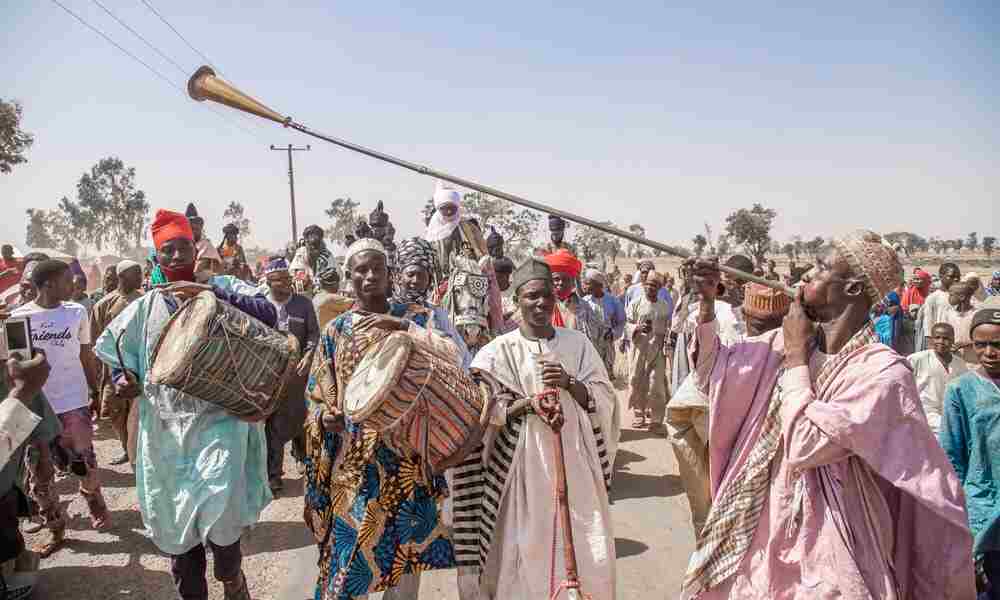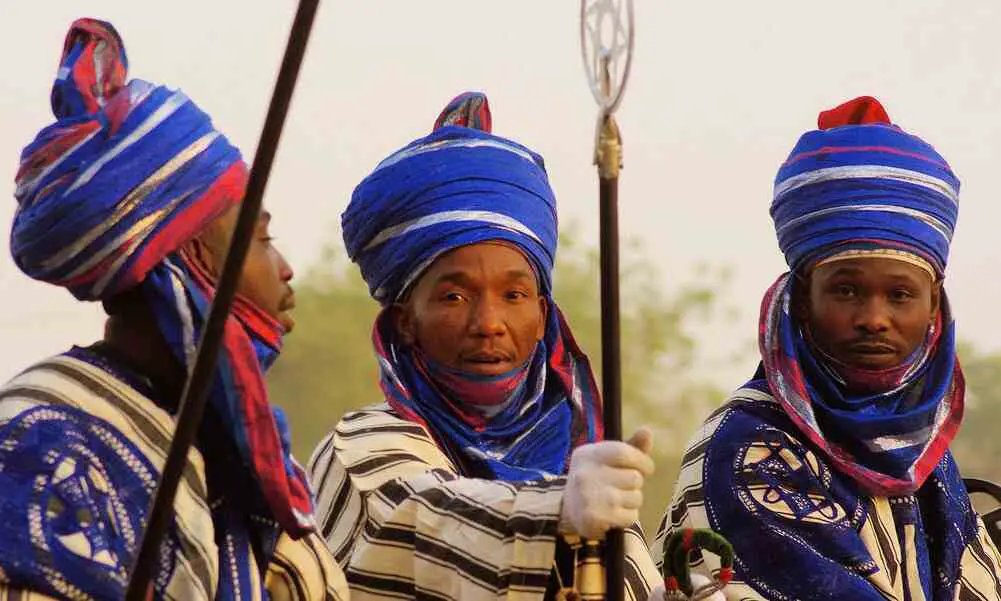Our present society is built upon the foundation of culture, which has influenced the lifestyle of people inhabiting that particular society. Culture is viewed generally as the way of life attributed to certain people. However, it varies from one group of people to another giving birth to a cultural dynamic. Similarly, as civilization takes roots, many aspects of culture are forgotten while others get modified. But how well do you know about culture? its benefits, it’s a negative influence, the culture of other tribes and your own culture. Therefore, we have compiled 100 facts about culture in general and the culture of a few tribes within Nigeria.
Interesting Facts About Culture
1. Culture encompasses the laws, morals, beliefs, knowledge, art, customs, and distinct attributes of a group of persons.
2. Africa is the only continent with the highest ethnic nationalities with various qualities like language, dishes, greetings, dressing, and dances.
3. To a great extent African people’s cultures are similar in terms of social values, religion, political value, economic and aesthetic value. All this put together differentiate African culture from the rest of the world.
4. Did you know that the attribute of respect is a core culture in African society? Especially for the aged and those who occupy traditional offices like chiefs and kings.
5. African arts and crafts include but aren’t limited to sculpture, paintings, pottery, ceremonial and religious headgear, and dress.
6. Interestingly, there are more than 250 ethnic tribes in current-day Nigeria. The three most dominant ethnic groups are the Hausa, Yoruba, and Igbo.
7. Previously, all ethnic tribes in Nigeria existed as separate kingdoms having their cultural values. However, British colonization has unified them as one entity leading to the loss and modifications of a certain culture.
8. The name “Benin” has a Portuguese origin, which came into use during the reign of Oba (ruler) Ewuare the Great, c. 1440.
9. In ancient times Benin was known as “Ubin”, a word that means beautiful people. It was used to describe the royal administrative city of Edo.
10. Edo people’s fashion accessories hold royalty in their make-up. This includes red beads, body marks, bangles, anklets, and raffia work.
11. In the traditional religion of the Edo, there exists, besides the human world, an invisible world of supernatural beings acting as interceders for the human world.
12. The word Osanobua in Edo encompasses a large number of divine principles – including the divine state of being merciful, timeless, goodness, justice, sublimity, and supreme.
13. Traditional Edo art is crafted in ways that reflect various spiritual and historical aspects of their cultural traditions. There are sculptures, plaques, and masks.
14. The vast collection of historical Edo art pieces is called the Benin Bronzes. In recent times it can be found in different parts of the globe.
Facts About Igbo Culture
15. Igbo tribe archaic practices have been subjected to evolution and outside influences, leading to the addition of new concepts and modifications.
16. Igbo culture is reflected in their visual art, language dialects, music, dance, attire, and cuisine.
17. The Igbo language was used by John Goldsmith as an example to justify deviating from the classical linear model of phonology as laid out in The Sound Pattern of English.
18. Igbo language is often considered to be one of the difficult languages to learn. This is due to its huge number of dialects, its richness in prefixes and suffixes, and its heavy intonation.
19. Nsibidi ideography existed among the Igbo before the 16th century but died out after it became popular among secret societies, which made Nsibidi a secret form of communication.
20. Igbo is a tonal language, and there are hundreds of different Igbo dialects and Igbo languages. However, there exists a central Igbo dialect generally used by most Igbo’s.
21. In 1789, the interesting narrative of the life of Olaudah Equiano was published in London, England, written by Olaudah Equiano, a former slave—The book features 79 Igbo words.
22. The most popular and renowned novel that deals with the Igbo and their traditional life was the 1959 book by Chinua Achebe, Things Fall Apart.
23. The novel “Things Fall Apart” illustrates the influence of British colonial rule and Christian missionaries on the traditional Igbo community— During the late nineteenth or early 20th century.
24. The Igbo traditional musical instruments are mainly percussion instruments, there are udu, ekwe, and ogene.
25. One of the popular musical forms among the Igbo is highlife— A fusion of jazz and traditional music.
26. Did you know that masking is one of the most common art styles in Igboland? It’s linked strongly with Igbo traditional music.
27. In the Igbo tradition, once a child is born, he or she is believed to give signs of who they have reincarnated from— This can be through behaviour, physical traits, and statements by the child.
28. In the Igbo culture, children are not allowed to call elders by their names without using honorifics like Mazi or Dede— It’s considered disrespectful.
Facts About Hausa Culture
29. Did you know that due to Islamic food restrictions, most Hausa people don’t eat pork?
30. Hausa people enjoy eating Suya— Small pieces of meat made with or without vegetables, which are skewered on a wooden or metal stick roasted over an open fire.
31. One of Hausa culture’s traditional sports events is Dambe (boxing)— It’s a brutal form of traditional martial art.
32. Did you know that Hausa leather was erroneously known to medieval Europe as Moroccan leather?
33. The tie-dye techniques have been used in the Hausa region of West Africa for centuries, with renowned indigo dye pits in Kano, Nigeria.
34. Did you know that the traditional dress of the Hausa consists of loose flowing gowns and trousers? This style is adapted to allow proper ventilation.
35. Hausa men are easily recognized because of the large flowing gowns known as Babban Riga— Usually feature elaborate embroidery designs around the neck and chest area.
36. Hausa women can be identified by wrappers called Zani, made with a colourful cloth known as Ankara. Accompanied by a matching blouse, head tie (kallabi), and shawl (Gyale).
37. Hausa women who are Muslims traditionally use Henna (lalle) designs painted onto the hand instead of nail polish. This practice signifies various uses like beautification and it’s believed to keep off evil spirits.
38. As a form of beautification Berber, Bedouin, Zarma, and Fulani women traditionally use Kohl (kwalli) to accentuate facial symmetry.
39. Eventually all Hausa dishes consist of grains such as sorghum, millet, rice, or maize.
40. Most Hausa breakfast comes in the form of cakes and dumplings made from ground beans and fried, known as kosai. Also, from wheat flour, fried and served with sugar or chili, known as Fankaso.
Fun Facts About Culture
41. Studying your culture is a way of enlarging your knowledge scope as culture is said to have evolved.
42. Every culture has its own do’s and don’ts aimed at instilling moral values, which make us better human beings.
43. Cultural tradition has helped in grooming a disciplined society, by making everyone aware that disobedience to certain cultural laws has its consequences attached.
44. Culture may have evolved through time but its detailed information about that practice is still kept alive in various cultural materials.
45. Cultural teaching always aims for peace— Teaching its members to co-exist with all other cultures irrespective of cultural differences.
46. To a large extent, many individuals have come to drive the meaning of life from their respective cultures.
47. Culture can light up the pathway into the future. Since, it enlightens us about what has been in existence previously, from which we can deduce the future.
48. Culture reveals our responsibility to us; This includes to divine beings, to ourselves, to our families, and the larger society.
49. Culture gives us a gateway to study about our ancestors— Ancestral beliefs and practices over time are embedded into the culture and preserved for ages.
50. Culture brings about self-realization, the knowledge that one belongs to a particular kind of group.
51. Culture provides stability by ensuring the continuity of cities, states and regions.
52. Culture boosts some sort of love bond among individuals, since there seems to be a common entity unifying them together.
53. Sadly, a culture that doesn’t embrace diversity by accepting other cultures into its fold becomes ingrown.
54. Strict cultural practices that fail to evolve may become stagnant. This stage isn’t healthy for its members because it becomes forceful on them.
55. When a cultural practice becomes imposed on its members, it’s likely to hinder their discernment or critical thinking between what’s right or wrong.
56. Cultural influences the lifestyle of its members like career choice, dressing, and food choices.
57. Culture influences how a person relates with others, views life, and the type of value they uphold.
58. Cultural gaps can be bridged between societies through intentional understanding and acceptance of different cultures.
59. The attitude of valuing other people’s culture allows one to grow, experience new ideas and ways of doing things.
60. Cultural diversity is one of the greatest sources of inspiration. Getting to know about what others think about life and other things in general.
61. A culture is said to be healthy if it can discard harmful traditional practices and adapt to the trend of positive change.
Facts About Yoruba Culture
62. The Yoruba religion comprises the traditional religious and spiritual concepts and practices of the Yoruba people.
63. The cultural concept of Yoruba society is preserved through songs and storytelling.
64. Orisa or Orisha in Yoruba refers to various godly forms that reflect one of the various manifestations of God in the Yoruba religious system.
65. One of the commonly known Yoruba gods is called Shango— A god of thunder, lightning, fire, and justice who manifests as a king and who always wields a double-edged axe that conveys his divine authority and power.
66. According to the Yoruba culture, Eshu, one of their esteemed Gods, has two avatar forms, which are manifestations of his dual nature – positive and negative energy.
67. The God who reveals the past gives solutions to problems in the present and influences the future in Yoruba culture is called Orunmila.
68. The Yoruba oracle priests that practice the divination system are called Babalawos.
69. The Orisa community and lineages of the Yoruba tribe can be found in parts of current-day Europe and Asia.
70. Medieval Yoruba settlements were surrounded by massive mud walls— The wall materials comprised puddled mud and palm oil, while the roofing materials ranged from thatches to aluminium and corrugated iron sheets.
71. The famous Yoruba fortification, the Sungbo’s Eredo, was the second-largest wall edifice in Africa— The structure was built in the 9th, 10th, and 11th centuries in honour of a traditional aristocrat, the Oloye Bilikisu Sungbo.
72. Sungbo’s Eredo is in present-day Ogun State and It’s the largest pre-colonial monument in Africa, larger than the Great Pyramid or Great Zimbabwe.
73. The Yoruba royal courts are in charge of commissioning numerous architectural objects such as veranda posts, gates, and doors that are embellished with carvings.
74. The Yoruba palaces are built with thicker walls, dedicated to the gods, and play significant spiritual roles.
75. The majority of Yoruba artwork is associated with palaces and the royal court, this includes, staff, court dress, and beadwork for crowns.
Culture Facts Everyone Should Know
76. Did you know that the Igala kingdom is ruled by an “Attah”?
77. Sadly, Nigeria’s culture was greatly affected by British colonial rule. This brought about the merging of different cultures and the modernization of the rest.
78. The British spread Christian missionaries throughout southern Nigeria to assist in the establishment of a western-style educational system— This resulted in the teaching of the English language.
79. Historically, lands was viewed as a cultural entity that can’t be bought or sold. However, colonization brought the notion of individuals owning land, and commercialization of land began.
80. Ekpe translates to Leopard in the Efik language and is believed to be a spirit that resides in the forest.
81. The Efik-speaking tribes concentrated in Calabar and are ruled by an “Obong”.
82. Historically, the Efik wore clothing made of Raffia— The fiber of the leaf-stalk of a palm made into a thread and woven to make clothes and bags.
83. Ikpaya is a royal type of gown also made from raffia— Worn by an Obong-elect during the traditional coronation ceremony.
84. The missionaries who arrived in 1846 contributed to the changes in women’s attire in Efik society— Several types of English dresses were introduced to Efik women such as the Victorian dresses known in Efik as Ọnyọnyọ.
85. Oral tradition holds that a type of clothing known as “Itu ita” was the earliest fabric imported into Old Calabar— This material is believed to have been imported by the Portuguese.
86. The traditional attire for Efik men usually consists of a white long-sleeved shirt, a long broad soft neckerchief or scarf of costly material, and a wrapper tied around the waist.
87. The masks and accoutrements of the Ekpo society make up the greatest works of art in Ibibio society.
88. The Ibibio feminine masks are decorated with light colours such as white— Their features are delicate to emphasize their femininity.
89. The Ibibio masculine masks are decorated with dark colours to represent the mystic forces of the forest.
90. The Ibibio masks often have distorted features in unnatural manners such as having bulging eyes or misplaced mouths— Created to be intentionally ugly and come from naturally occurring human diseases and illnesses.
91. The Ibibio people use signs of baldness and walking sticks to portray symbols of karma and old age.
92. The majority of the Ijaw tribes are now primarily Christians, about 65% of their population.
93. Ijaw religious beliefs hold that water spirits are like humans, having personal strengths and shortcomings and that humans dwell among the water spirits before being born.
94. In the Ijaw tribe, spectacular masqueraders are taken to be possessed of the particular spirits on whose behalf they are dancing.
95. The Urhobos people are known to live very close to Rivers and sometimes in boats on the Niger River.
96. Most of the Urhobos people’s histories, mythologies, and philosophies are water-related.
97. Marriage ritual in Urhobos, known as Udi Arhovwaje, takes place in the ancestral home of the bride or a patrilineal relation of the bride.
98. Marriage in Urhobo culture requires prayers to the ancestors known as Erivwin and God addressed as Oghene.
99. In Urhobo, after the marriage rite the husband can claim a refund of the money (bride price) should the marriage fail.
100. According to Urhobo culture, If a wife later becomes unfaithful, it is believed that she will be punished by the Erivwin – this could be the reason Urhobo women have an enduring reputation as loyal and faithful wives.









0 Comments